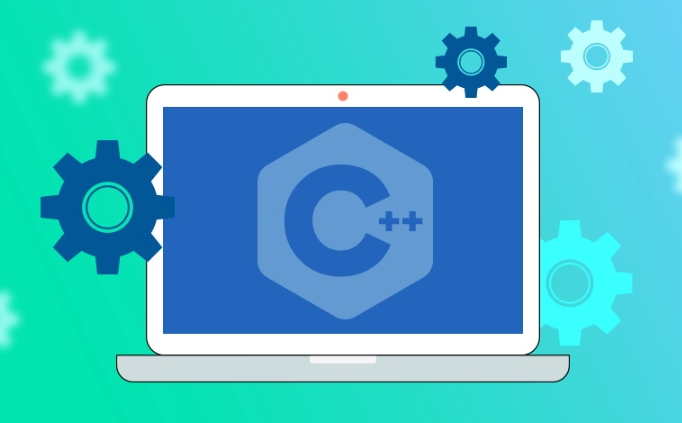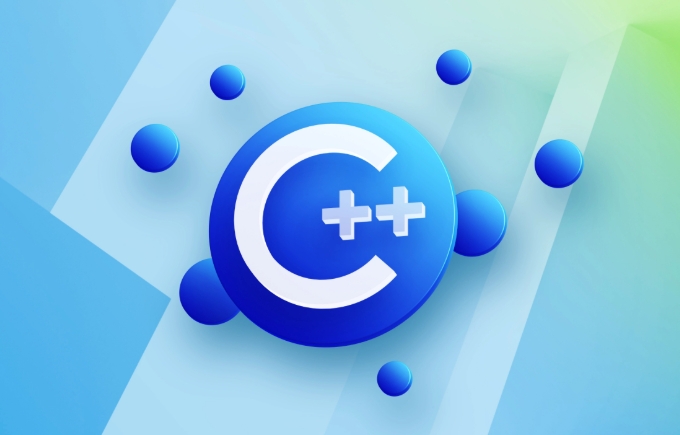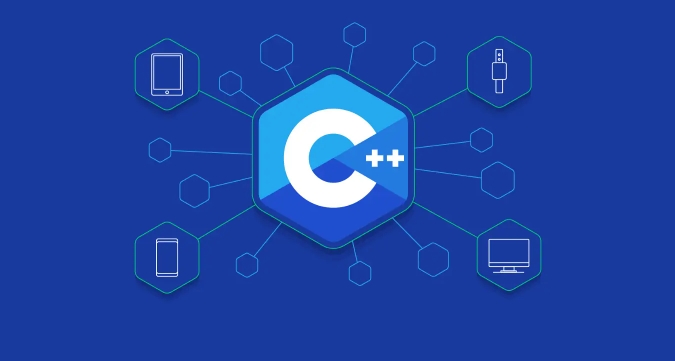To start a simple game engine from scratch, the core modules include window management, rendering loops, input processing and basic scene structure. The first step is to initialize the window library and create an OpenGL context, and set up the graphics environment using GLFW or SDL2; the second step is to implement basic 2D rendering, write a GLSL shader and submit vertex data using VAO/VBO; the third step is to add input processing, control game behavior through key detection, and introduce time difference calculation for frame rate control; the fourth step is to build a simple scene management system, and use GameObject and component methods to uniformly manage the update and drawing of multiple objects, keeping the code clear and easy to expand.

If you want to use C to build a simple game engine from scratch, you don’t need to pursue complexity from the beginning. The core is to understand several key modules: window management, rendering loops, input processing and basic scene structure. Here are some practical steps and suggestions to help you build the easiest and available game engine.

Window creation and graphics context initialization
Before writing game logic, you must first let the program display a window and prepare the environment for drawing. Usually we use GLFW or SDL2 to create windows and handle OpenGL contexts.

The basic steps are as follows:
- Initialize window library (such as
glfwInit()) - Setting up the OpenGL version (for example, using the 3.3 core configuration file)
- Create a window and bind an OpenGL context
- Load OpenGL function pointers using glad or glew
- Enter the main loop, continuously clear the screen and exchange the buffer area
while (!glfwWindowShouldClose(window)) {
glClear(GL_COLOR_BUFFER_BIT);
// The rendering code can be placed here glfwSwapBuffers(window);
glfwPollEvents();
}After this step is completed, you will see a black screen window. Although there is no content yet, it has laid a solid foundation for subsequent development.

Add basic 2D rendering capabilities
Once you have the window, the next step is to let it show something. You can first implement a simple rectangle drawing function, such as "sprite" or "quadrilateral".
Things to do include:
- Write Vertex Shader and Fragment Shader (GLSL)
- Compile link to shader program
- Define vertex data (position, color, texture coordinates, etc.)
- Submit data to GPU using VAO and VBO
- Call the draw command in each frame
For example: A red triangle requires only three vertices and a fragment shader that outputs red. This is the first step to verify that your rendering system is working properly.
Input processing and game loop control
The game engine must respond to the user's actions. You can obtain the keyboard and mouse status through GLFW callback function or polling method.
Common practices:
- Check the key status for each frame (such as
glfwGetKey(window, GLFW_KEY_ESCAPE)) - Map inputs to game behavior, such as pressing space jump, WASD to control movement
- Concentrate input processing into an InputManager class for easy maintenance
You can also add time difference calculations to the main loop to use for frame rate control or physical simulation time step.
The prototype of scene and object management
When you want to display multiple objects at the same time, you need some organizational structure. You don't need to start with the ECS architecture at the beginning, you can start with a simple GameObject Component.
A simple design idea:
- Each GameObject has properties such as position, rotation, and scaling.
- Each object may be attached with a SpriteRenderer or other component
- The main loop traverses all objects and calls their Update() and Render()
This way you can manage different elements together instead of a bunch of global variables.
Basically that's it. Don’t rush to add too many advanced functions. First, run these parts and then gradually expand them. For example, texture loading, collision detection, sound effect support, etc. The key is to keep the code structure clear and not pile up large frameworks from the beginning, as it will easily get stuck.
The above is the detailed content of C tutorial for creating a simple game engine. For more information, please follow other related articles on the PHP Chinese website!

Hot AI Tools

Undress AI Tool
Undress images for free

Undresser.AI Undress
AI-powered app for creating realistic nude photos

AI Clothes Remover
Online AI tool for removing clothes from photos.

Clothoff.io
AI clothes remover

Video Face Swap
Swap faces in any video effortlessly with our completely free AI face swap tool!

Hot Article

Hot Tools

Notepad++7.3.1
Easy-to-use and free code editor

SublimeText3 Chinese version
Chinese version, very easy to use

Zend Studio 13.0.1
Powerful PHP integrated development environment

Dreamweaver CS6
Visual web development tools

SublimeText3 Mac version
God-level code editing software (SublimeText3)

Hot Topics
 Using std::chrono in C
Jul 15, 2025 am 01:30 AM
Using std::chrono in C
Jul 15, 2025 am 01:30 AM
std::chrono is used in C to process time, including obtaining the current time, measuring execution time, operation time point and duration, and formatting analysis time. 1. Use std::chrono::system_clock::now() to obtain the current time, which can be converted into a readable string, but the system clock may not be monotonous; 2. Use std::chrono::steady_clock to measure the execution time to ensure monotony, and convert it into milliseconds, seconds and other units through duration_cast; 3. Time point (time_point) and duration (duration) can be interoperable, but attention should be paid to unit compatibility and clock epoch (epoch)
 What is the volatile keyword in C ?
Jul 04, 2025 am 01:09 AM
What is the volatile keyword in C ?
Jul 04, 2025 am 01:09 AM
volatile tells the compiler that the value of the variable may change at any time, preventing the compiler from optimizing access. 1. Used for hardware registers, signal handlers, or shared variables between threads (but modern C recommends std::atomic). 2. Each access is directly read and write memory instead of cached to registers. 3. It does not provide atomicity or thread safety, and only ensures that the compiler does not optimize read and write. 4. Constantly, the two are sometimes used in combination to represent read-only but externally modifyable variables. 5. It cannot replace mutexes or atomic operations, and excessive use will affect performance.
 How to get a stack trace in C ?
Jul 07, 2025 am 01:41 AM
How to get a stack trace in C ?
Jul 07, 2025 am 01:41 AM
There are mainly the following methods to obtain stack traces in C: 1. Use backtrace and backtrace_symbols functions on Linux platform. By including obtaining the call stack and printing symbol information, the -rdynamic parameter needs to be added when compiling; 2. Use CaptureStackBackTrace function on Windows platform, and you need to link DbgHelp.lib and rely on PDB file to parse the function name; 3. Use third-party libraries such as GoogleBreakpad or Boost.Stacktrace to cross-platform and simplify stack capture operations; 4. In exception handling, combine the above methods to automatically output stack information in catch blocks
 What is a POD (Plain Old Data) type in C ?
Jul 12, 2025 am 02:15 AM
What is a POD (Plain Old Data) type in C ?
Jul 12, 2025 am 02:15 AM
In C, the POD (PlainOldData) type refers to a type with a simple structure and compatible with C language data processing. It needs to meet two conditions: it has ordinary copy semantics, which can be copied by memcpy; it has a standard layout and the memory structure is predictable. Specific requirements include: all non-static members are public, no user-defined constructors or destructors, no virtual functions or base classes, and all non-static members themselves are PODs. For example structPoint{intx;inty;} is POD. Its uses include binary I/O, C interoperability, performance optimization, etc. You can check whether the type is POD through std::is_pod, but it is recommended to use std::is_trivia after C 11.
 How to call Python from C ?
Jul 08, 2025 am 12:40 AM
How to call Python from C ?
Jul 08, 2025 am 12:40 AM
To call Python code in C, you must first initialize the interpreter, and then you can achieve interaction by executing strings, files, or calling specific functions. 1. Initialize the interpreter with Py_Initialize() and close it with Py_Finalize(); 2. Execute string code or PyRun_SimpleFile with PyRun_SimpleFile; 3. Import modules through PyImport_ImportModule, get the function through PyObject_GetAttrString, construct parameters of Py_BuildValue, call the function and process return
 What is function hiding in C ?
Jul 05, 2025 am 01:44 AM
What is function hiding in C ?
Jul 05, 2025 am 01:44 AM
FunctionhidinginC occurswhenaderivedclassdefinesafunctionwiththesamenameasabaseclassfunction,makingthebaseversioninaccessiblethroughthederivedclass.Thishappenswhenthebasefunctionisn’tvirtualorsignaturesdon’tmatchforoverriding,andnousingdeclarationis
 What is a null pointer in C ?
Jul 09, 2025 am 02:38 AM
What is a null pointer in C ?
Jul 09, 2025 am 02:38 AM
AnullpointerinC isaspecialvalueindicatingthatapointerdoesnotpointtoanyvalidmemorylocation,anditisusedtosafelymanageandcheckpointersbeforedereferencing.1.BeforeC 11,0orNULLwasused,butnownullptrispreferredforclarityandtypesafety.2.Usingnullpointershe
 How to pass a function as a parameter in C ?
Jul 12, 2025 am 01:34 AM
How to pass a function as a parameter in C ?
Jul 12, 2025 am 01:34 AM
In C, there are three main ways to pass functions as parameters: using function pointers, std::function and Lambda expressions, and template generics. 1. Function pointers are the most basic method, suitable for simple scenarios or C interface compatible, but poor readability; 2. Std::function combined with Lambda expressions is a recommended method in modern C, supporting a variety of callable objects and being type-safe; 3. Template generic methods are the most flexible, suitable for library code or general logic, but may increase the compilation time and code volume. Lambdas that capture the context must be passed through std::function or template and cannot be converted directly into function pointers.






